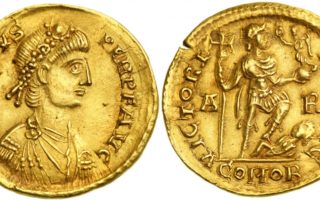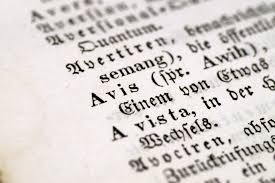Hi to all of you ! How are you ? Last week, I introduced you to the Antonine dynasty. We will then see the continuation of Roman history with the presentation of the Severan dynasty. We will see here, of whom it was composed, at what time did it exist…. Now let’s get to the heart of the matter and, above all, good reading.
Context of the emergence of the Severan dynasty
After the fall of the Antonine dynasty, a second “year of the four emperors” will arrive. This is the year 193 AD. This concerns Commodus, Pertinax, Didius Julianus and Septimius Severus. During this short period, the reign of Commodus ended and several reigns followed one another. First, that of Pertinax which lasted only two months and that of Didius Julianus which also lasted two months. These two emperors were very unpopular and they were murdered and executed respectively. This year saw the beginning of the reign of Septimius Severus which lasted for more than 17 years.
Who did this Severan dynasty consist of?
This dynasty consisted of Septimius Severus (April 13, 193 AD – February 4, 211 AD), Geta (February 4, 211 AD – February 26, 212 AD), Caracalla (February 4, 211 AD – April 8, 217 AD) ), Macrinus (April 11, 217 AD – May 16, 218 AD), Elagabalus (May 16, 218 AD – March 12, 222 AD) and Severus Alexander (March 13, 222 AD – February 22, 235 AD )
Now that we know the makeup and background surrounding the Fourth Roman Dynasty, let’s take a look at what happened during that short span of four decades.
The History of the Severan dynasty
This dynasty began with a civil war that lasted from 193 to 197 AD. Septimius Severus becomes emperor in 193 AD and quickly undertakes a march on Rome, accompanied by several legions. During his first years of reign, he got rid of these competitors: Didius Julianus, Pescennius Niger and Clodius Albinus. Subsequently, he consolidated his right to be emperor by proclaiming himself the son of Marcus Aurelius. He also strengthens the power for his sons Caracalla and Geta and for his wife Julia Domna by giving them the titles of “Caesar” and “Augusta”, “Caesar” and “Augusta” respectively.
Finally, Severus devoted almost all of the remaining years of his reign to the defense of the Empire. Thus, it consolidated the borders in particular vis-a-vis Parthians and in Africa and especially in Brittany. Indeed, he left Rome in 208 AD for what is now Scotland and remained there until the end of his life in 211 when he died in York.
Septimius Severus was therefore an emperor playing on all fronts. Both military, political, …
The Severan dynasty continued with the reigns of Geta and Caracalla who were both co-emperors.
Begin with the reign of Geta. This one was short: a little over a year and during that short span of time, Geta concentrated mostly on how to kill his brother: Caracalla. Indeed, the two brothers could not stand each other. As a result, they never spent time together, didn’t worry about each other … This ended with the murder of Geta by Carcalla who killed him in his mother’s arms.
Carcalla then the sole borrower, undertook various military campaigns against the Germans and the Goths. Subsequently, he created a monetary reform including the creation of the Antoninian (see my article Roman silver coins for more information). Also, he is known for having built large buildings such as the Baths of Caracalla. He finally set out again in campaign against the Parthians. His reign ended with his assassination by Iulius Martialis, a Praetorian Guard.
Caracalla was therefore a rather military and warrior emperor, but who sometimes also had good ideas in finances, especially with the creation of the Antoninianus.
The dynasty then saw Macrinus become emperor. Like Geta, he reigned for a short time; he began his reign by signing peace with different peoples. Also, he regulated the finances but thus had to disadvantage newcomers in the army. Thus, his popularity declined. Subsequently, Elagabal, then 15 years old, was appointed emperor by the Roman army, which did not greatly appreciate Macrinus. He was therefore forced to flee and was caught up and executed.
Elagabalus therefore took over. But being very young, several problems arose. First, he could not rule without the help of his mother and grandmother, and second, he was subject to many whims. Subsequently, he adopts Severus Alexander and names him Caesar but subsequently tries to have him eliminated. The army, appreciating Alexander, takes it out on Elagabalah. For this, she invades the emperor’s palace and kills him. His body is then given to the people who try to put it in the sewers but this will be without success and the body of the deceased will then be thrown into the Tiber.
Elagabal therefore had a rather disastrous reign surely due to his young age.
The Severan dynasty therefore ended with the reign of Alexander Severus. He, unlike his predecessor, was thoughtful, wise, virtuous … During his reign, he showed wisdom and simplicity both in his life and in his actions. He is also implementing numerous monetary reforms to help the poorest. However, his military side was weak since he was considered too “soft” and he also had, like Elagabalus, too much influence from his mother. What made his disfavour with the armies. His reign ended in 235 when Alexander Severus died assassinated by the Germans.
Alexander Severus was therefore a good Roman emperor who was too influenced and not tough enough militarily.
Summary
The Severan dynasty was therefore the dynasty that marked the decline of the Roman Empire. In addition, it had its ups and downs and the emperors in being part were for the most part young and unfit for this important function.
This article is now complete. Hope you enjoyed it, if so please let me know in the comments space and also tell me what topic you would like me to talk about in a future post. By the way, for the next article, we will continue to talk about Roman history with “Military Anarchy” See you next week!
Receive my free book Around the Roman Coin by clicking here




